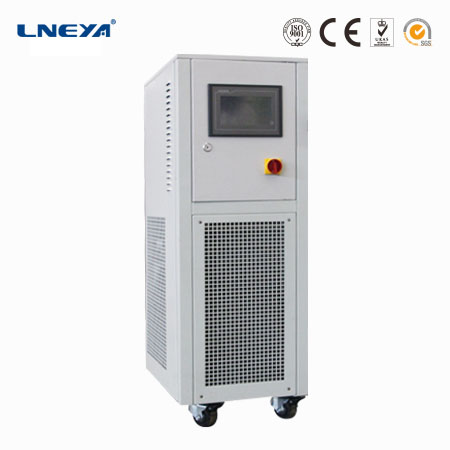Laboratory dedicated chiller pressure description
Il laboratory-specific chiller is one of the more popular equipments in the mechanical equipment industry. For this reason, the relevant pressure instructions have been specially compiled to help you better understand the laboratory-specific chiller.
The reference value of the test chamber-specific chiller and the pressure resistance of the piping system components refers to the design given pressure related to the mechanical strength of the pipeline components. The nominal pressure is generally expressed by PN. Nominal pressure—the compressive strength of the product at the reference temperature, expressed in PN, unit: MPa, reference temperature: different materials, the reference temperature is also different, for example, the steel reference temperature is 250 ° C, the nominal pressure is 1.0 Mpa, Recorded as: PN 1.0 Mpa.
The working pressure of the special chiller in the laboratory refers to the large pressure specified by the high working temperature of the pipeline conveying medium for the operation safety of the pipeline system. The working pressure is generally expressed by Pt.

The design chiller design pressure of the laboratory refers to the large instantaneous pressure of the water supply pipe system acting on the inner wall of the pipe. The sum of the working pressure and the residual water hammer pressure is generally used. The design pressure is generally expressed by Pe. The test pressure refers to the pressure to be achieved by the pipeline, container or equipment under the pressure resistance and air tightness test. The test pressure is generally expressed by Ps.
The nominal chiller pressure of the laboratory is a nominal pressure artificially specified for the convenience of design, manufacture and use. The unit of this nominal pressure is actually the pressure, and the pressure is the common name of Chinese. The unit is “Pa”. Not “N”. The nominal pressure of a pressure vessel refers to the nominal pressure of the pressure vessel flange. The nominal pressure of the pressure vessel flange is generally divided into seven grades, namely 0.25, 0.60, 1.00, 1.60, 2.50, 4.00, 6.40 MPa.
In general, the pressure can be divided into: test pressure > nominal pressure > design pressure > working pressure, so, everyone understands?
Raccomandazioni correlate
-
Battery test chiller operation evaporating temperature description
1226In the current new energy vehicle battery test equipment, the use of more batteries to test the chiller evaporation temperature has a certain impact on the equipment, then what is the specific impact? When the battery test chiller heat load increa...
Visualizza i dettagli -
Precauzioni per l'utilizzo del sistema di controllo della temperatura di prova dei wafer
928Precauzioni per l'utilizzo del sistema di controllo della temperatura di prova dei wafer
Visualizza i dettagli -
Selection of heat transfer oil for the refrigeration and heating system of the reactor
1089In the chemical industry, the reactor is a commonly used container, and temperature control is the main quantity to be controlled. The heating and refrigeration cycle equipment of the reactor is an important factor to ensure product quality. The r...
Visualizza i dettagli -
Temperature control range and accuracy of high and low temperature tester
1019The temperature control accuracy of heat transfer oil medium of the high and low temperature tester used for component testing is plus or minus 0.5 ℃, which solves the problem of temperature control lag in electronic components. Main advantages of...
Visualizza i dettagli
 Refrigeratori industriali LNEYA Produttore Fornitore
Refrigeratori industriali LNEYA Produttore Fornitore













